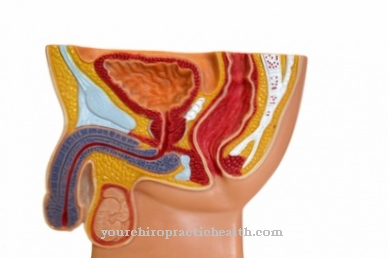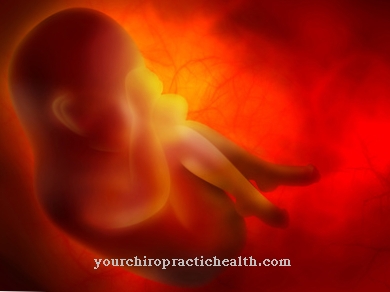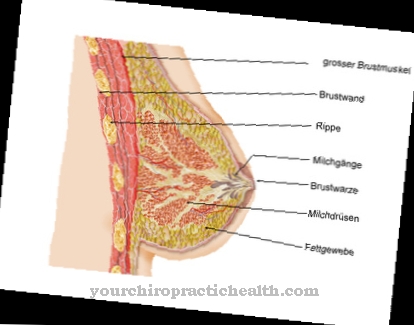All mammals have mammary glands on the underside of their bodies. Only in elephants and humans do the paired glands sit in the chest area. They produce milk with different fat contents (depending on the nutritional level) and can therefore function differently in a healthy and constructive manner. The distance between the birth duct in the area of the vagina and the breast is about two body lengths of the baby and should ideally be controlled by the baby himself with the help of the instinctive Breast crawls be bridged.
What is breast crawling?
After the birth process, the baby will take its first breath. Since this can be painful, it starts to scream. Then it opens its eyes and collects the first light impressions. After about ten minutes, it will look and recognize the breast. Reflexes make the baby react now. The saliva begins to flow and it begins searching movements of both the head and the legs.
With pendulous movements of the head, the lips search the surface of the mother's skin. The fingers begin to grip and claw and are to be equated with those pumping movements with which baby animals stimulate their mother's milk bar so that the milk shoots into the tissue.
At the same time, the legs try to push the body forward. The knees and tips of the toes as well as the inner edge of the foot brace against the mother's abdominal wall. This crawling over the breast, called breast crawling, is the first stage of breastfeeding.
If the mother gives the baby time to find the breast on its own and to dock on at the beginning, it will function much faster and easier in the following time and bring both mother and baby a higher degree of satisfaction in their relationship with one another.
It is best to have the mother leaned back in a half-sitting position and place the baby skin to skin on her stomach. The child already knows this situation from birth when it has exerted a certain beneficial pressure on the mother with the body (also with regard to the afterbirth). The baby can feel its way horizontally to the areola without having to overcome gravity. Vibrations of the abdominal wall and the mother's voice, as well as the breathing movements, the heartbeats and above all the warmth and smell of the skin accompany the child on its way up along its mother.
If the baby is given time to make contact himself, to process all impressions and to reach the goal at his own pace, the breathing rate and the heartbeat remain calmer and the togetherness is more pleasant.
Function & task
The first feeling of hunger arises during breast crawling, which can take one to two hours directly after the birth. The blood circulation notices that the supply of nutrients via the umbilical cord is missing. When drinking, the oral cavity, esophagus and stomach come into contact with food for the first time. Similar to breathing, unfamiliar sensations and even pain can occur.
The baby lies prone in an advantageous position below the breasts and is stroked on the bottom and feet so that the search reflex is initiated. If the breast has been grasped correctly and there is no severe pain, the child does not need to be moved any further. Otherwise, the head should be regulated a little. Above all, the nose should not be pressed against the chest, as this could tire the baby too quickly when sucking if it constantly has to take exhausting air.
Both haptic and visual stimuli directed the baby to the breast.Now it looks for a comfortable head position in order to be able to continue drinking with pleasure. The head ideally falls outward from the chest and can be supported with the mother's upper arm. Only after a few times of suction does the child's swallowing reflex set in. If the baby begins to puff or no longer swallow, he should be given a break. The infant may be offered the opportunity to drink every 2 to 3 hours.
Illnesses & ailments
To prevent discomfort, the mother can take some measures. Every mother will drink enough to keep her own circulation stable. Breastfeeding children show a high resistance to gastrointestinal and respiratory diseases. The kidneys work better, the wound healing progresses faster and children with congenital heart defects are relieved by the nutritious milk.
While an oversupply of milk is easier to handle and could be frozen, a mother with too little milk quickly reaches her limits. In these cases, either a regular massage of the breasts, increased suckling of the child or, ultimately, various additional foods can help.
If the mother was given anesthetic at birth, the baby will only be able to start crawling later and search for longer. However, bonding to the mother during this phase should not be interrupted. Weighing and measuring take place later, because the distractions of the environment are massive anyway. It is nice when nothing disturbs the first contact, the first contact.



























